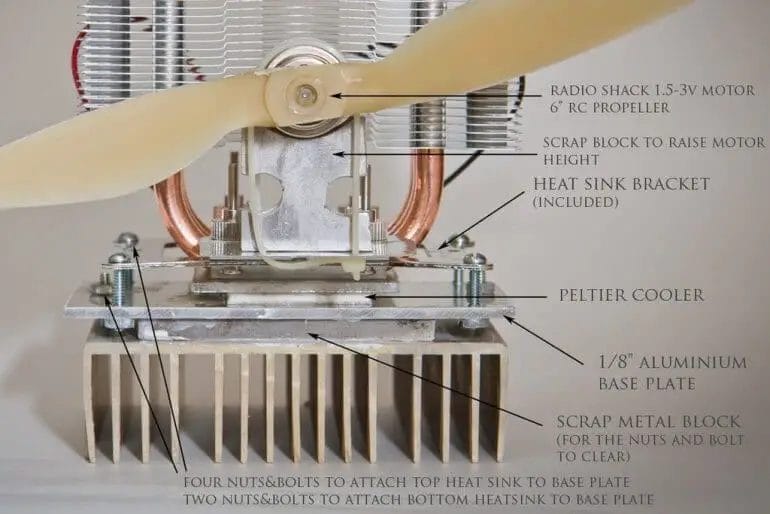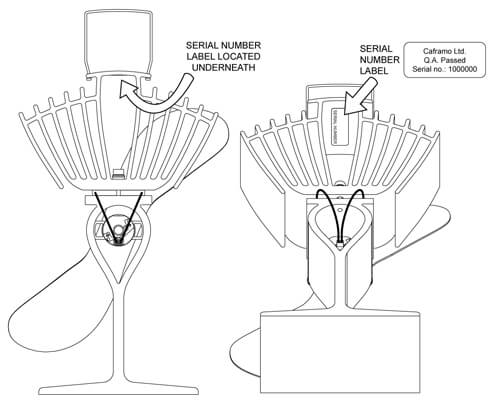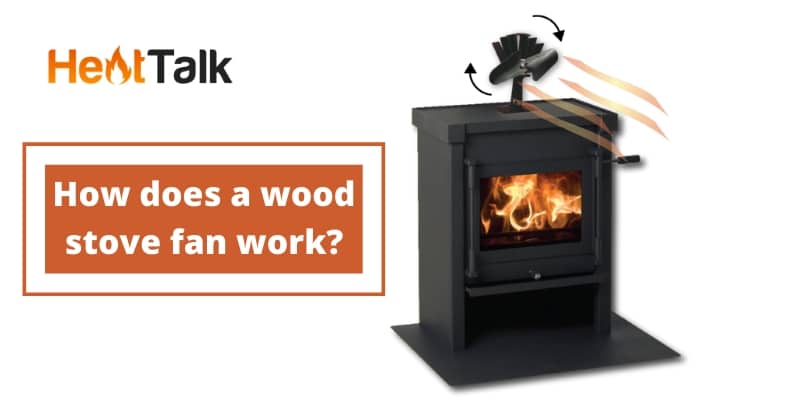A wood stove fan is a device designed to help circulate the heated air produced by a wood-burning stove. These fans work by using the heat generated from the stove to power a motor, which in turn spins the fan blades. As the blades rotate, they push the warm air outwards, distributing it more effectively throughout the room. By improving the air circulation, a wood stove fan can help to maximize the efficiency of your wood-burning stove and ensure that the heat is evenly distributed for optimal comfort.

Understanding the mechanics of wood stove fans
Wood stove fans, also known as stove top fans or heat powered fans, are devices that circulate warm air generated by a wood stove throughout a room or space. They are designed to improve the efficiency of wood stoves by distributing the heat more evenly, reducing hot and cold spots in the area.

Wood stove fans operate using a simple yet effective mechanism. They are typically powered by the heat produced by the wood stove itself, eliminating the need for electricity or batteries. The fan consists of a set of blades or fins that rotate when exposed to the heat from the stove. As the blades rotate, they push the warm air upwards and outwards, creating a gentle breeze that helps to distribute the heat throughout the room.
The key component of a wood stove fan is the thermoelectric module, also known as a Peltier unit. This module is made up of two ceramic plates with a series of semiconductors sandwiched between them. When one side of the module is heated by the wood stove, it creates a temperature difference across the semiconductors, generating electricity. This electricity powers the motor that drives the fan blades.
Wood stove fans are designed to start operating at a specific temperature, usually around 50 to 100 degrees Celsius. Once the stove reaches this temperature, the fan will begin to rotate and circulate the warm air. As the stove cools down, the fan will slow down and eventually come to a stop.
The size and number of blades on a wood stove fan can vary. Fans with more blades tend to be more efficient at moving air, while fans with fewer blades may be more compact and portable. Some wood stove fans also come with adjustable settings to control the speed and intensity of the airflow.
It is important to note that wood stove fans are not designed to increase the heat output of the stove itself. They simply help to distribute the existing heat more effectively. In fact, using a wood stove fan can actually help to reduce fuel consumption by allowing the stove to operate at a lower temperature while still providing sufficient warmth.
In summary, wood stove fans are mechanical devices that utilize the heat generated by a wood stove to distribute warm air throughout a room or space. They operate using a thermoelectric module that converts heat into electricity to power the fan blades. Wood stove fans enhance the efficiency of wood stoves by promoting better heat circulation and reducing temperature variations within the area.

The science behind wood stove fan operation
Wood stove fans, also known as heat-powered fans or stove top fans, are innovative devices that help distribute heat generated by a wood stove more effectively and efficiently. These fans operate without the need for electricity or batteries, making them a sustainable and cost-effective solution for heating your home.
The science behind wood stove fan operation lies in the principle of thermoelectricity. Thermoelectricity refers to the generation of electrical voltage and current from the temperature difference between two different materials. In the case of wood stove fans, this temperature difference is created by the heat emitted from the wood stove.
Wood stove fans typically consist of a base or stand, a heat sink, and a set of thermoelectric modules. The base or stand supports the fan and allows it to sit on top of the wood stove. The heat sink, usually made of aluminum or another heat-conductive material, is responsible for absorbing the heat from the stove’s surface. The thermoelectric modules are located between the heat sink and the fan blades.
Inside the thermoelectric modules, there are two different types of semiconductors: p-type and n-type. These semiconductors are made of materials that have different electrical properties. When a temperature difference is applied across the thermoelectric modules, it creates an electric current due to the movement of electrons between the two types of semiconductors.
The electric current generated by the thermoelectric modules powers a small electric motor that drives the fan blades. As the fan blades rotate, they push the warm air away from the heat sink and distribute it throughout the room. This mechanism helps to improve the circulation of heated air, resulting in a more uniform and efficient heating process.
It is important to note that wood stove fans operate within a specific temperature range. They require a minimum temperature differential between the heat source (wood stove) and the surrounding air to start spinning the fan blades. Once the temperature reaches the optimal range, the fan will start automatically, and its speed will increase as the temperature rises.
Wood stove fans offer several benefits beyond just distributing heat. They can help reduce wood consumption by improving the stove’s efficiency and reducing the need for additional heating sources. Additionally, they operate silently and have a low environmental impact since they harness the energy from the heat source itself.
In summary, wood stove fans utilize the principles of thermoelectricity to convert the temperature difference between the wood stove and the surrounding air into electric current, which powers a fan to distribute warm air. Understanding the science behind wood stove fan operation can help you make an informed decision when considering this eco-friendly and efficient heating solution for your home.

Efficient Heat Circulation with Wood Stove Fans
Wood stoves have long been a popular choice for heating homes, cabins, and other enclosed spaces. These stoves offer a cozy and inviting atmosphere while providing reliable warmth. However, one common challenge with wood stoves is the uneven distribution of heat within the room. Fortunately, this issue can be addressed by using wood stove fans. In this section, we will explore the benefits and functionality of wood stove fans in achieving efficient heat circulation.
How do wood stove fans work?
Wood stove fans, also known as stove top fans or heat-powered fans, are devices designed to enhance the circulation of warm air generated by a wood-burning stove. These fans operate without the need for electricity, instead utilizing the heat from the stove to generate power.
The basic principle of operation involves the utilization of thermoelectric modules, which are made of two different types of semiconductors. When the base of the fan comes into contact with the hot surface of the stove, one side of the thermoelectric module gets heated while the other side remains cooler. This temperature difference creates an electric current within the module, which powers the fan’s motor.
Benefits of wood stove fans
Wood stove fans offer several benefits that make them a valuable addition to any wood-burning stove:
- Improved heat distribution: The primary advantage of using a wood stove fan is its ability to circulate warm air efficiently throughout the room. By placing the fan on top of the stove, it helps distribute heat to all corners of the space, preventing hot spots and cold zones.
- Increased heating efficiency: With the help of a wood stove fan, the warm air produced by the stove reaches a wider area, allowing for better utilization of heat. This, in turn, increases the overall heating efficiency and reduces the amount of firewood needed.
- Energy-saving: Wood stove fans are entirely self-powered and do not require any electricity to operate. This not only saves energy but also eliminates the need for additional wiring or batteries.
- No noise pollution: Unlike electric fans, wood stove fans operate silently, making them ideal for maintaining a peaceful and quiet ambiance in the room.
- Eco-friendly: Wood stove fans contribute to a sustainable and eco-friendly heating solution by utilizing the existing heat without any external power source.
Tips for using wood stove fans effectively
To maximize the efficiency of your wood stove fan, consider the following tips:
- Place the fan at the back of the stove, as close to the flue pipe as possible. This location allows the fan to capture the maximum amount of heat.
- Ensure the surface of the stove is clean and free from any obstructions. This allows for better heat transfer to the base of the fan.
- Start the fan when the surface temperature of the stove reaches around 185°F (85°C). This is the optimal temperature for the fan to operate efficiently.
- Regularly clean and maintain the fan to ensure smooth operation and longevity.
In summary, wood stove fans are an effective solution for achieving efficient heat circulation with wood-burning stoves. By improving heat distribution, increasing heating efficiency, and operating silently, these fans enhance the overall comfort and functionality of wood stove heating systems.
Benefits of using wood stove fans for optimal heating
Wood stove fans are a great addition to any home heating system, providing numerous benefits that enhance the overall heating experience. By circulating warm air more efficiently and effectively, these fans not only help in reducing heating costs but also ensure uniform temperature distribution throughout the room. Let’s explore some of the key benefits of using wood stove fans for optimal heating:
1. Improved heat distribution
One of the major advantages of using wood stove fans is that they help in distributing heat more evenly throughout the room. Traditional wood stoves often result in hot spots near the stove and cooler areas further away. However, with the help of a wood stove fan, warm air is propelled across the room, ensuring that the temperature remains consistent no matter where you are.
2. Enhanced energy efficiency
Wood stove fans work by harnessing the heat generated by the stove and transferring it efficiently throughout the room. By circulating the warm air, these fans help in maximizing the heat output from the stove, allowing you to use less wood while still maintaining a comfortable temperature. This increased energy efficiency can significantly reduce heating costs in the long run.
3. Quieter operation
Modern wood stove fans are designed to operate quietly, ensuring minimal noise disruption in your living space. With advanced blade designs and improved motor technology, these fans produce minimal noise while still providing optimal airflow. You can enjoy the warmth of your wood stove without any annoying background sounds.
4. Self-powered operation
Many wood stove fans are self-powered, which means they don’t require any external electricity source. These fans utilize the heat from the stove to generate electricity, which powers the fan blades. This not only eliminates the need for additional electrical wiring but also ensures uninterrupted operation during power outages.
5. Eco-friendly heating
Wood stove fans promote eco-friendly heating by utilizing the energy from renewable resources. By using wood as a fuel source, you are reducing your carbon footprint and contributing to a more sustainable environment. With the added efficiency of a wood stove fan, you can maximize the heat output from your wood stove and minimize the impact on the environment.
6. Easy installation and maintenance
Installing a wood stove fan is a straightforward process, and most models come with detailed instructions for quick and hassle-free setup. Additionally, wood stove fans require minimal maintenance, usually limited to occasional dusting and keeping the fan blades clean. This makes them a convenient and user-friendly option for enhancing your home heating system.
In summary, wood stove fans offer numerous benefits for optimal heating. They improve heat distribution, enhance energy efficiency, operate quietly, and are self-powered. Additionally, they promote eco-friendly heating and require easy installation and minimal maintenance. By incorporating a wood stove fan into your heating setup, you can enjoy a more comfortable and cost-effective heating experience.
FAQs
How do wood stove fans work?
Wood stove fans are powered by the heat produced by the stove itself. They have a thermoelectric module that generates electricity when heated. This electricity powers a motor, which spins the fan blades. As the fan blades rotate, they circulate the warm air in the room, improving heat distribution and increasing overall efficiency.
Conclusion
In conclusion, wood stove fans are an excellent addition to any home heating system. These innovative devices harness the power of heat to circulate the warm air more efficiently throughout the room, resulting in increased comfort and reduced energy costs. By utilizing the principle of thermoelectricity, wood stove fans convert the heat difference between the stove and the surrounding air into electricity, which is then used to power the fan blades. This process ensures a continuous and self-sustaining airflow, without the need for external power sources or batteries. With their eco-friendly and cost-effective operation, wood stove fans are a must-have for anyone looking to optimize their wood-burning experience and create a cozy ambiance in their living space.